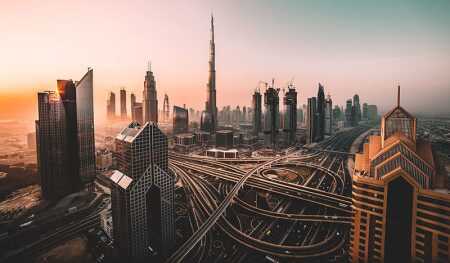What could the future of cities look like? One of the liveliest discussions at ULI Germany’s Urban Leader Summit in Frankfurt in May was on the continuous transformation of urban areas, featuring Thomas Sevcik of the Arthesia Group and XanaduAlpha and Ute Schneider, partner at KCAP Architects and Planners.
In the future, cities will have more in common, and will have more interaction with each other than with regional governments, Sevcik predicted. This “parasovereignty” can already be seen in places such as Dubai. The Dubai International Financial Centre observes British business law rather than local law to attract international businesses.
Schneider agreed that cities are bound together in a new global economic system. The traditional model of zoning was based in industrialization and does not serve current needs. She suggested moving from programmatic zoning to creating urban clusters. In Singapore, planners are creating a second central business district, the Jurong Lake District. The idea is to add 100,000 jobs and 20,000 new homes to this formerly sleepy industrial area in the next three decades, focusing on mixed-use buildings and adding a high-speed rail terminal by 2026.
Perhaps instead of focusing on the traditional European city style, where the density is highest in the middle and disperses toward the edges, we should consider cities like donuts, Sevcik proposed. In Paris, the central city accounts for only 2 million of the 10 million–person metro area. In the central cities people have money, but the outer ring of the city is where people are making money. “That is where innovation will happen,” he said. “We need to create more jobs where the people are.”
People have been living in various constellations for millennia, Schneider said. There is great density in the vertical slums of Caracas or the sprawling slums of Sao Paulo, but not a lot of opportunity. “Open cities are multidirectional rather than hierarchical,” she said. The question when designing a new quarter is not what it will offer, but which people will gather there. Connectivity is of the utmost importance: accessibility and mobility are major determining factors in a district’s success.
What does all this mean for the real estate sector? “We need to change our focus from physical products to content products,” Sevcik said. “Be curators rather than planners.” American-Canadian journalist, author, and activist Jane Jacobs always comes up in discussions of urban development, but “not wanting more density is perverse,” he said.
Schneider paraphrased computing pioneer Jay Forrester, who pointed out that people might think it is strange or unethical to design social systems, but people have always designed the systems in which they live. As we look to a future of smart cities, we have to tend not only to the urban cores but also to the suburbs and rural areas to ensure that development benefits all of us.





